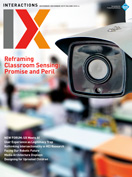Authors:
Roberta de Andrade, Ingrid Monteiro
How do you describe your lab to visitors? We are not a single laboratory, but rather a set of laboratories, rooms, and specialized spaces, located on the campus of the Federal University of Ceará in Quixadá, in the northeast region of Brazil. These spaces have distinct and integrated purposes and are available to professors, researchers, students, startups, and technology companies.
 |
UFC Quixadá top view. |
Coordinated by the Innovation and Entrepreneurship Core—INOVE, these spaces benefit the entire innovative ecosystem by integrating six undergraduate courses and one postgraduate course, all in technology, with growing market opportunities in research, development, and technological innovation.
Within this spatial conglomerate, we have research and design laboratories, a startup incubator, a coworking space, and some rooms for outside companies that do research and development with university researchers, employing students. Consequently, students not only have the opportunity to be exposed to various kinds of theoretical content, practical activities, and experiences but also have access to the appropriate materials, equipment, and spaces to learn the desired professional skills.
 |
Digital design students producing watercolor pictures to be used in an animation. |
What is a unique feature of your lab? We are able to integrate and optimize research, development, and technological innovation with a multidisciplinary approach and connections with students, professors, and the community to achieve positive results.
In the same ecosystem, companies conduct their product- and service-development activities; researchers conduct their basic and applied research; and entrepreneurs are supported in accelerating and incubating new ventures. In this way, INOVE offers a dynamic innovation and business environment, where it is possible to walk the full path from idea to commercial products and services, expanding access to technologies and generating new ventures, in an integrated and self-sustaining way with society.
Here we can align demands: The research developed in our laboratories goes through a process of ideation and implementation in our startup incubator and coworking space, generating new technological solutions or parts of them. These results are reflected in new solutions that are jointly produced and implemented by larger companies, which return with market feedback.
 |
PG311 members with The Particles Hunter, a game to teach physics. |
How many people are in the lab, and what is the mix of backgrounds and roles? UFC Quixadá is often described as an IT theme park, since we offer the following undergraduate courses: information systems, computer networks, software engineering, computer science, digital design, and computer engineering. We also have a newly opened master's degree course in computer science. Students and researchers from all these areas collaborate on INOVE projects.
Our group is distinguished by being particularly diverse in terms of disciplines and levels of experience. There is a technical coordinator who manages the functioning of the environments and coordinates the needs of companies, researchers, and students. About 50 students are divided into work cells supported by our researchers.
The robotics cell develops new automation technologies, and the assistive technologies cell develops new low-cost products made from recycled materials. The entrepreneurial education cell offers entrepreneurship and management workshops.
Other applied research cells such as machine learning, computer vision, artificial intelligence, cloud computing, and human-computer interaction work in partnership with startups and companies, generating published and recognized studies that have received honorable mentions and awards at various national and international conferences.
In 18 months of operation, more than 5,700 people were directly impacted by workshops and events and more than 25 startups were formed, with four becoming spin-offs. Some patents are in progress, and some fully private research projects are ongoing.
 |
Students doing user studies in the lab. |
Briefly describe a day in the life of your lab. It's impossible to describe a standard routine, as each cell is independent. We track each group by using SCRUM in weekly sprints, and hold monthly update meetings to present the results, where everyone can make suggestions for improvement. Once a semester, we hold demonstrations of technological solutions for the market and often welcome visitors. Wednesdays are usually the busiest days.
 |
INOVE mural showing students and startups. |
What is one feature of your lab that you could not do without? The feeling that everyone belongs, the friendly and creative environment, the diversity. Once a semester, we reward the most active students with small treats related to INOVE and the university, and we celebrate together at the end of each year.
 |
Computer engineering project on display in an embedded systems exhibition at UFC Quixadá. |
What is one feature of your lab you want and do not have? A leisure and gaming environment for relaxation and to stimulate creativity.
 |
Smart glasses, an assistive technology for blind people. |
How would you describe how people interact in your lab? We are a large family where everyone is willing to help, make suggestions, make constructive criticism, and take some of their time to improve projects in other work cells.
 |
Paper prototyping workshop. |
What is the one thing you see as most important about the work you do there? We work in a region of the country where resources are scarce and most of our students have a lower per-capita income than they need to cover three meals a day. Many of them are the first person in their family in generations to attend a university. I believe that providing a research and development environment that helps change their reality, generating jobs, income, and a high-level of education, is what we do most enthusiastically.
 |
Digital design students conducting experiments with cyanotype, a manual image-printing process that uses sunlight. |
 |
UFC Quixadá on a rainy day. |
 |
One of the projects is a special floor capable of generating power from people's footsteps. |
 |
Design thinking workshop. |
Copyright held by authors
The Digital Library is published by the Association for Computing Machinery. Copyright © 2019 ACM, Inc.







Post Comment
No Comments Found